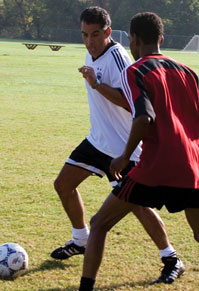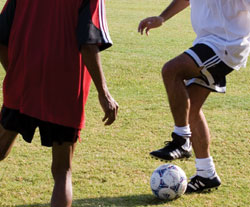

Articular cartilage is a layer of material in the hip joint that covers the surface of the femoral head and acetabulum, cushioning them and allowing them to move against each other without causing damage. This cartilage sometimes tears or becomes damaged, either from high impact sports like running or jumping, as a result of friction caused by hip impingement, or from basic wear and tear.
When articular cartilage is damaged, the torn fragment often protrudes into the joint, causing pain when the hip is flexed. Also, the bone material beneath the surface no longer has protection from joint friction, which may eventually result in arthritis if left untreated. Articular cartilage injuries often occur in conjunction with other hip injuries, and like labral tears, may require an MRI with a dye injection to confirm the diagnosis. After confirming the diagnosis, your doctor may recommend arthroscopic surgery.


Removal of loose bodies is a common reason physicians perform arthroscopic hip surgery. These loose bodies are often the result of trauma, such as a fall, an automobile accident, or a sports-related injury, or they may result from degenerative disease. When a torn labrum rubs continuously against cartilage in the joint, this may also cause fragments to break free and enter the joint. Loose bodies can cause a "catching" in the joint.
Unlike some hip conditions, loose bodies are relatively easy to detect with modern x-ray techniques. Once diagnosed, the removal of loose bodies through hip arthroscopy usually results in a significant reduction in hip pain.